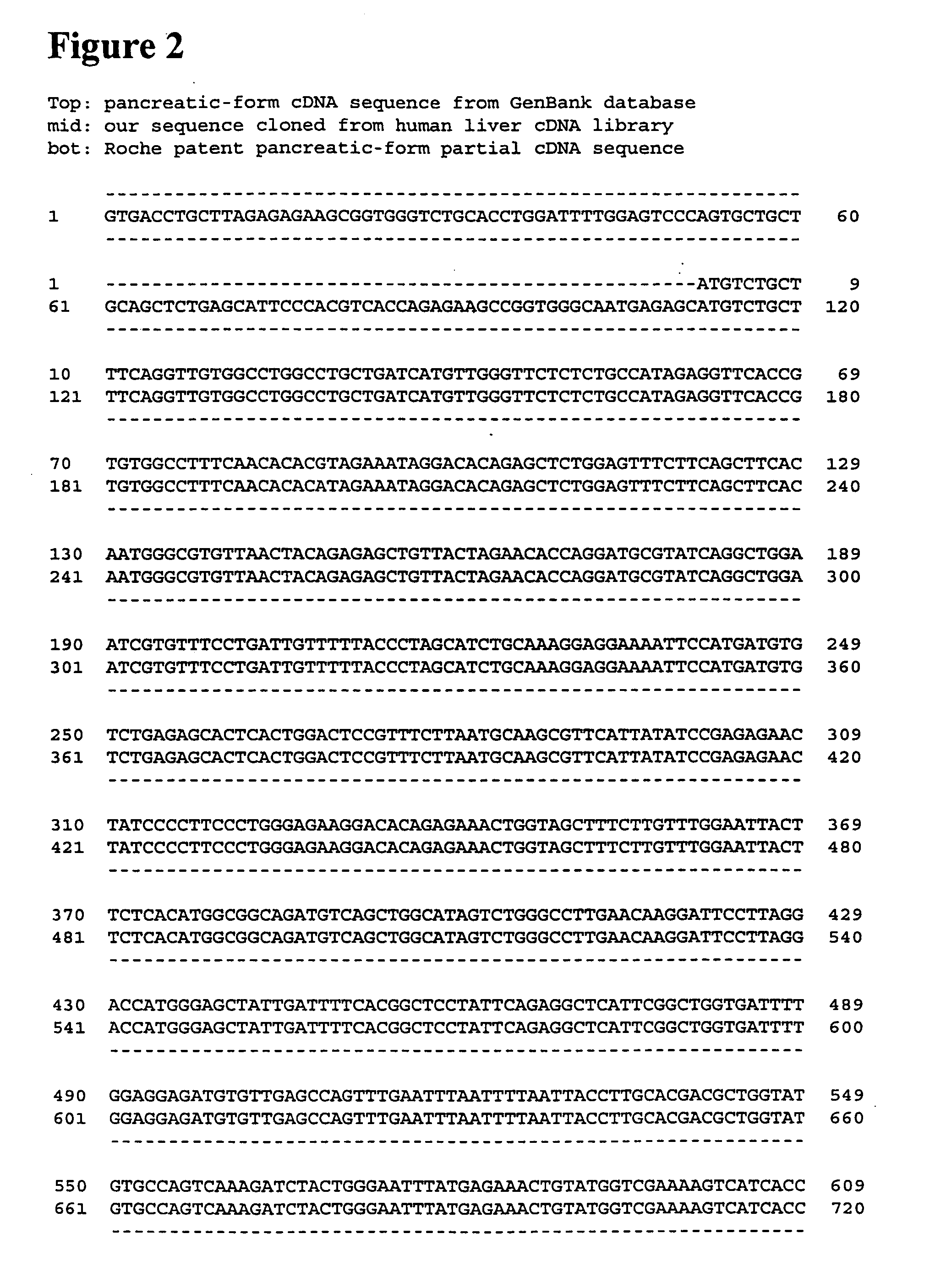Glycosyl phosphatidyl inositol specific phospholipase D proteins and uses thereof
a technology of glycosyl phosphatidylinositol and phospholipase, which is applied in the field of glycosyl phosphatidylinositol specific phospholipase d (gpipld) proteins, can solve the problems of little attention to the role, and achieve the effects of reducing the tendency to be phosphorylated, improving activity profile, and being useful in vitro or in vivo
- Summary
- Abstract
- Description
- Claims
- Application Information
AI Technical Summary
Benefits of technology
Problems solved by technology
Method used
Image
Examples
Embodiment Construction
GPI-PLD Proteins
[0064] The term “GPI-PLD biological activity” is herein defined as the enzymatic activity of GPI-PLD in cleaving the photodiester bond linking glycosylphosphatidylinositol to phosphatidic acid, e.g. releasing a GPI-anchored protein. As noted in Heller et al (1994), this activity has been localised to the N-terminal 39 kD portion of full length GPI-PLD.
[0065] The medical uses of GPI-PLD described herein can use the novel GPI-PLD variants or the forms of the enzyme disclosed in the prior art. In either event, the skilled person can use the techniques described herein and others well known in the art to produce large amounts of these proteins, or fragments or active portions thereof, for use as pharmaceuticals, in the developments of drugs and for further study into its properties and role in vivo.
[0066] In a further aspect of the present invention provides a polypeptide having the amino acid sequence shown in FIG. 3, which may be in isolated and / or purified form, fre...
PUM
| Property | Measurement | Unit |
|---|---|---|
| temperature | aaaaa | aaaaa |
| pH | aaaaa | aaaaa |
| pH | aaaaa | aaaaa |
Abstract
Description
Claims
Application Information
 Login to View More
Login to View More - R&D
- Intellectual Property
- Life Sciences
- Materials
- Tech Scout
- Unparalleled Data Quality
- Higher Quality Content
- 60% Fewer Hallucinations
Browse by: Latest US Patents, China's latest patents, Technical Efficacy Thesaurus, Application Domain, Technology Topic, Popular Technical Reports.
© 2025 PatSnap. All rights reserved.Legal|Privacy policy|Modern Slavery Act Transparency Statement|Sitemap|About US| Contact US: help@patsnap.com



